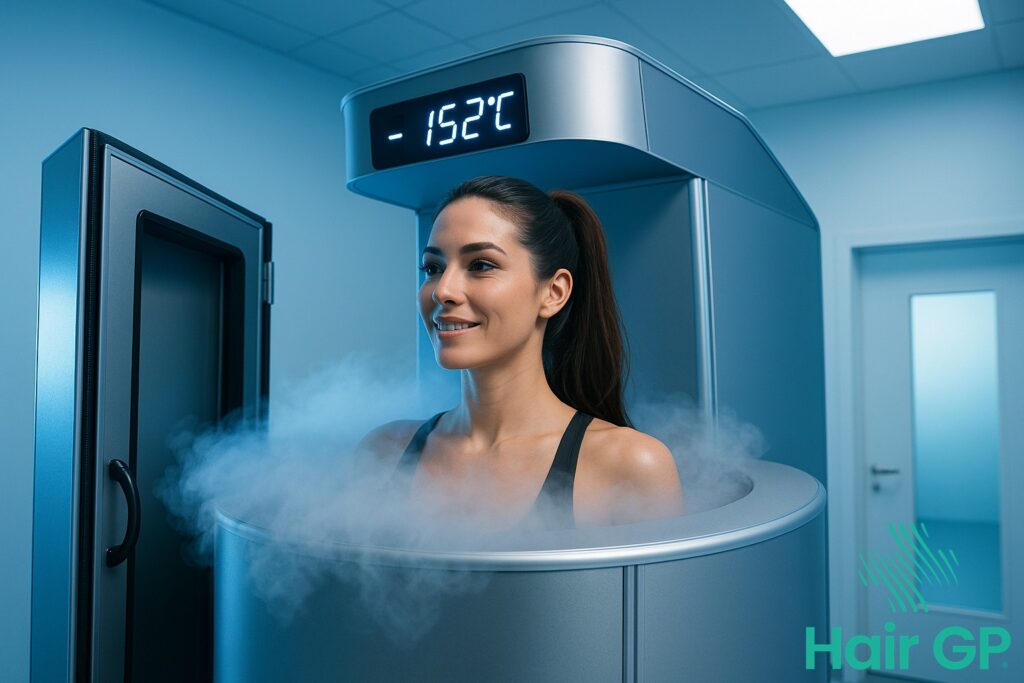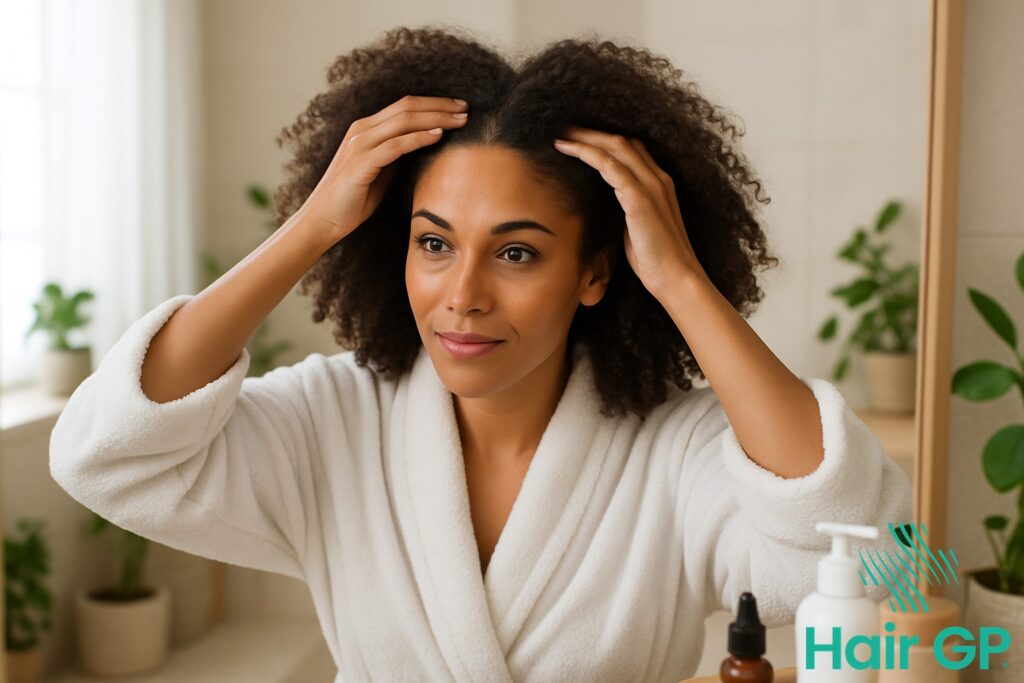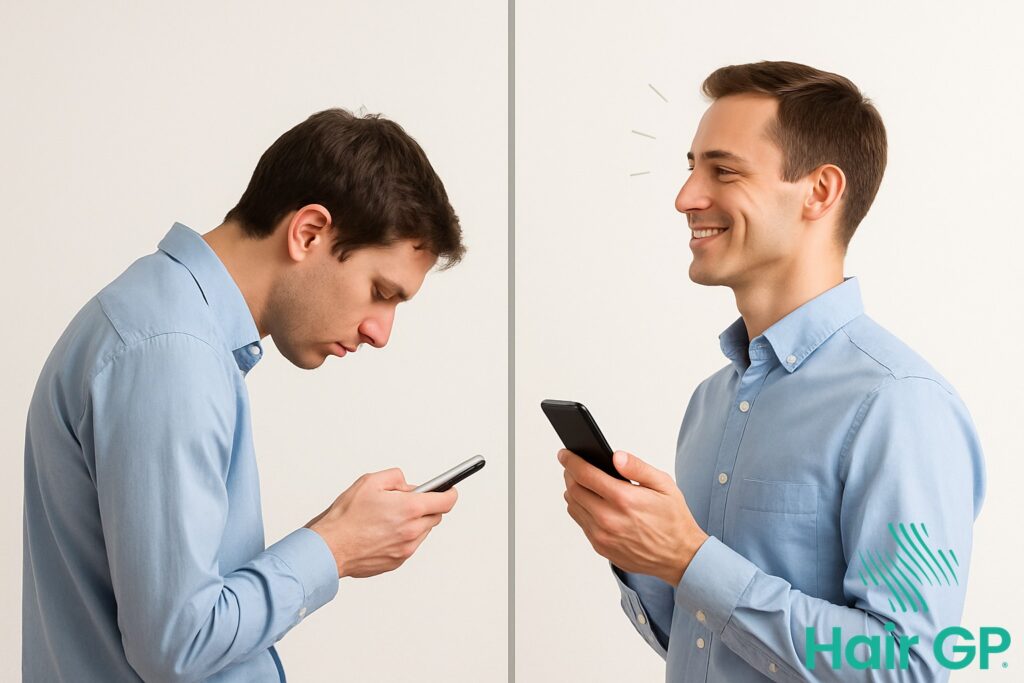Introduction
In the ever-evolving world of hair restoration treatments, cryotherapy for hair growth has emerged as a promising and innovative approach that’s capturing the attention of both researchers and those struggling with hair loss. This cutting-edge technique harnesses the power of cold exposure to stimulate hair follicles and promote healthier, stronger hair growth through scientifically-backed mechanisms that are only now being fully understood.
Cold therapy, once primarily associated with athletic recovery and pain management, is revealing remarkable benefits for hair health. By exposing the scalp to controlled cold temperatures, cryotherapy triggers a cascade of physiological responses that can revitalise dormant hair follicles, improve blood circulation, and create an optimal environment for hair growth. This natural, non-invasive approach offers hope to millions experiencing various forms of hair loss, from genetic pattern baldness to stress-induced shedding.
Throughout this comprehensive guide, we’ll explore the fascinating science behind how cold exposure influences hair growth at the cellular level, examining the research that supports its effectiveness. You’ll discover the multiple benefits cryotherapy offers for overall hair health, from preventing further loss to strengthening existing strands. We’ll also delve into practical applications, including professional cold cap systems, scalp cooling technologies, and how these treatments can address specific hair conditions. Whether you’re considering professional treatments or curious about incorporating cold therapy into your home hair care routine, this article provides the evidence-based insights you need to make informed decisions about using cryotherapy for your hair growth journey.
Key Takeaways – TL/DR
- Cryotherapy can stimulate hair growth by improving blood circulation to hair follicles and reducing inflammation
- Cold caps and scalp cooling systems are proven effective for preventing chemotherapy-induced hair loss
- Both whole body cryotherapy and targeted scalp treatments show promise for conditions like alopecia areata
- Regular cold exposure may strengthen hair strands and improve overall scalp health
- Professional cryotherapy treatments and at-home cold therapy methods can be incorporated into hair care routines
What is Cryotherapy for Hair?
Cryotherapy for hair represents a specialised application of cold therapy that utilises controlled exposure to extremely low temperatures to stimulate hair growth and improve scalp health. This innovative approach encompasses various methods, from localised scalp treatments to whole body cryotherapy sessions, all designed to harness the body’s natural responses to cold for promoting healthier hair.
Types of Cold Therapy
Several forms of cryotherapy treatments have been adapted specifically for hair restoration purposes. Whole body cryotherapy involves brief exposure to temperatures ranging from -110°C to -140°C in specialised chambers [1], whilst participants wear protective gear for extremities. Scalp cryotherapy offers a more targeted approach, applying cold directly to the scalp using cooling caps or devices that circulate coolant at controlled temperatures. Cold cap therapy, originally developed for chemotherapy patients, maintains scalp temperatures between -15°C to -40°C to preserve hair follicles. Liquid nitrogen cryotherapy represents another localised treatment option, where controlled applications of liquid nitrogen create brief, intense cold exposure to specific scalp areas requiring stimulation.
How It Works
The mechanisms behind cold therapy’s effectiveness for hair growth involve complex physiological responses. Initial vasoconstriction occurs when blood vessels narrow in response to cold, followed by reactive vasodilation as the body warms, creating a pumping effect that enhances blood flow to hair follicles [2]. This process triggers metabolic changes within follicle cells, potentially increasing their activity and resilience. The anti-inflammatory effects of cryotherapy may also benefit scalp health by reducing inflammation that can impede hair growth. Additionally, cold exposure stimulates the release of endorphins and other beneficial compounds that support overall scalp wellness and potentially activate dormant follicles.

The Science Behind Cold Exposure and Hair Growth
The scientific mechanisms underlying how cold exposure stimulates hair growth involve complex physiological responses that enhance follicular health through improved circulation and cellular activation. When cryotherapy works on the scalp, it triggers a cascade of biological processes that create an optimal environment for hair follicles to thrive, from enhanced blood flow to increased metabolic activity at the cellular level.
Blood Circulation Benefits
The primary mechanism through which cold exposure benefits hair growth is through its profound effect on blood circulation. When scalp temperature drops during cryotherapy, the initial vasoconstriction response causes blood vessels to narrow temporarily[3]. This is quickly followed by reactive hyperemia, a compensatory vasodilation that dramatically increases blood flow to the treated area. This enhanced circulation delivers crucial nutrients and oxygen directly to hair follicles, creating an enriched environment for growth.
The improved nutrient delivery system resulting from this vascular response ensures that follicles receive adequate supplies of amino acids, vitamins, and minerals essential for keratin production. Studies have shown that this cold-induced vascular response can increase local blood flow by up to 400% following treatment[2], providing hair follicles with unprecedented access to growth-supporting nutrients.
Cellular Response
At the cellular level, cold exposure triggers several protective and regenerative mechanisms that directly benefit hair growth. The production of heat shock proteins increases significantly during cryotherapy, helping to protect follicular cells from stress and damage whilst promoting cellular repair[4]. These proteins play a crucial role in maintaining the health and longevity of hair follicles throughout their growth cycle.
Additionally, cold exposure enhances mitochondrial function within follicular cells, boosting their energy production capacity. This increased metabolic activity supports the high energy demands of actively growing hair. Research has demonstrated that cryotherapy stimulates the production of various growth factors, including vascular endothelial growth factor (VEGF), which promotes angiogenesis around follicles and creates a more supportive microenvironment for hair growth[5].
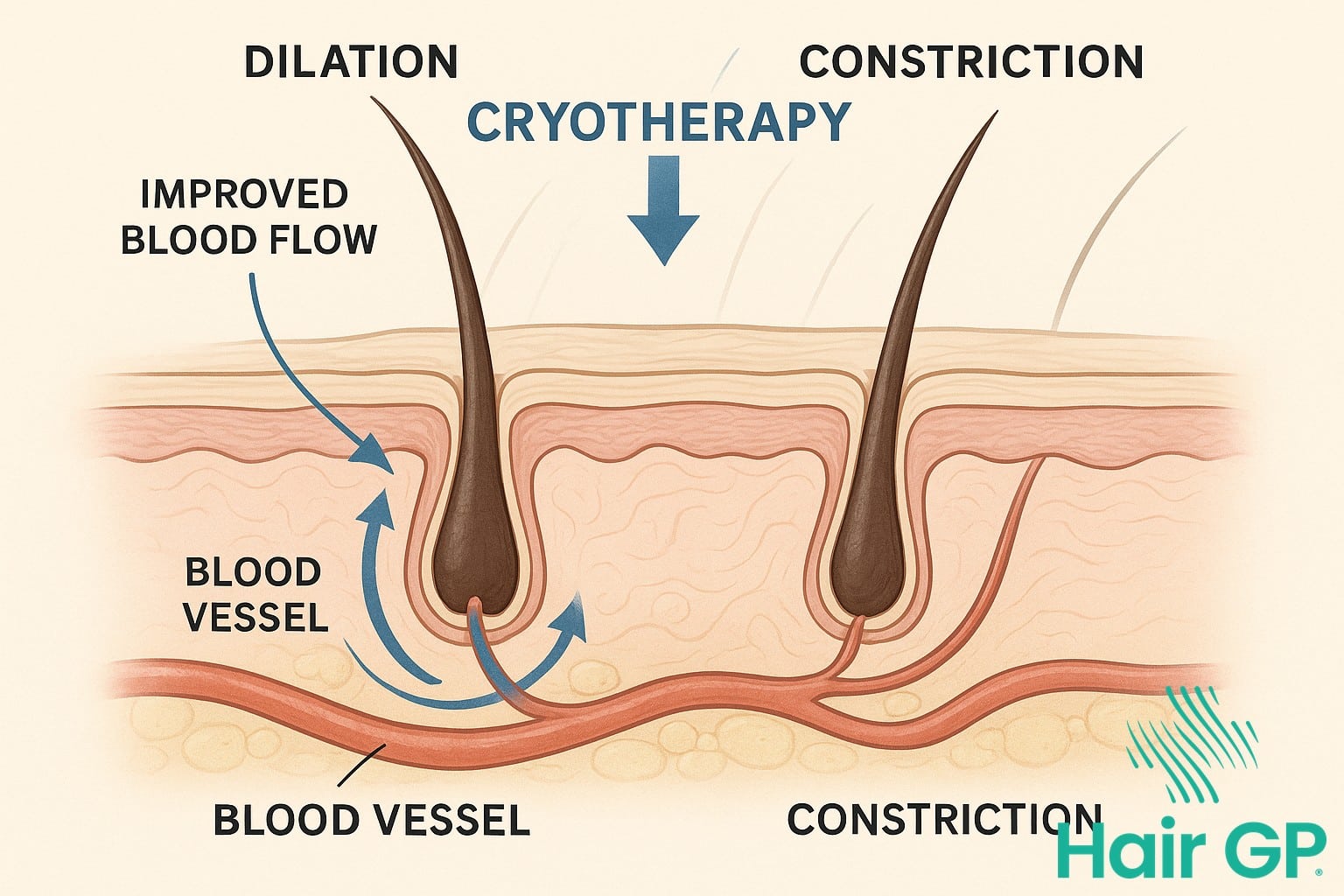
Benefits of Cryotherapy for Hair Health
Cryotherapy offers multiple benefits for hair health by stimulating follicles, improving scalp circulation, and strengthening the hair structure. Through controlled cold exposure, this treatment enhances hair quality whilst addressing common concerns like hair loss and breakage, resulting in healthier hair overall.
Hair Loss Prevention
Cold therapy effectively helps prevent hair loss through several mechanisms. The treatment preserves follicle health by increasing blood flow to the scalp, delivering essential nutrients and oxygen[1]. By reducing inflammation in the scalp tissue, cryotherapy creates an optimal environment for hair growth whilst minimising factors that contribute to follicular damage[2]. Additionally, the stress reduction benefits associated with cryotherapy treatments help regulate cortisol levels, which when elevated can trigger hair shedding. This multi-faceted approach to reducing hair loss makes cryotherapy particularly effective for those experiencing stress-related or inflammatory hair conditions.
Hair Strengthening
Cryotherapy helps strengthen hair through its effects on the hair shaft’s protein structure and cuticle integrity. The cold temperatures cause the hair cuticles to seal tightly, creating a smoother surface that reflects light better and reduces moisture loss. This cuticle sealing effect not only enhances shine but also protects the inner cortex from environmental damage. The treatment strengthens the protein bonds within the hair shaft, resulting in reduced breakage and improved elasticity. Regular cryotherapy sessions contribute to stronger, more resilient hair that can better withstand daily styling and environmental stressors, ultimately improving overall hair quality and appearance.

Cold Caps and Scalp Cooling Systems
Specialised scalp cooling systems and cold caps have revolutionised hair preservation strategies, particularly for patients undergoing chemotherapy. These devices utilise controlled scalp hypothermia to reduce blood flow to hair follicles during treatment, significantly decreasing chemotherapy-induced alopecia. From FDA-approved medical systems to emerging home-use technologies, cold treatment methods offer hope for maintaining hair during challenging medical treatments.
Medical Applications
Cold caps represent a breakthrough in chemotherapy hair preservation, with FDA-approved scalp cooling systems demonstrating remarkable efficacy in clinical settings. These devices work by maintaining scalp temperatures between -15°C and -40°C during chemotherapy infusions, creating vasoconstriction that limits drug exposure to hair follicles [6]. Studies involving breast cancer patients have shown success rates ranging from 50-70% for hair retention when using properly fitted scalp cooling systems throughout treatment [7].
Modern scalp cooling technology includes both manual cold caps requiring frequent changes and automated systems that continuously circulate coolant. The scalp hypothermia induced by these devices not only preserves hair but also improves patients’ psychological wellbeing and quality of life during cancer treatment. Healthcare providers increasingly recognise cold treatment as an essential supportive care option, particularly for patients receiving taxane or anthracycline-based chemotherapy regimens.
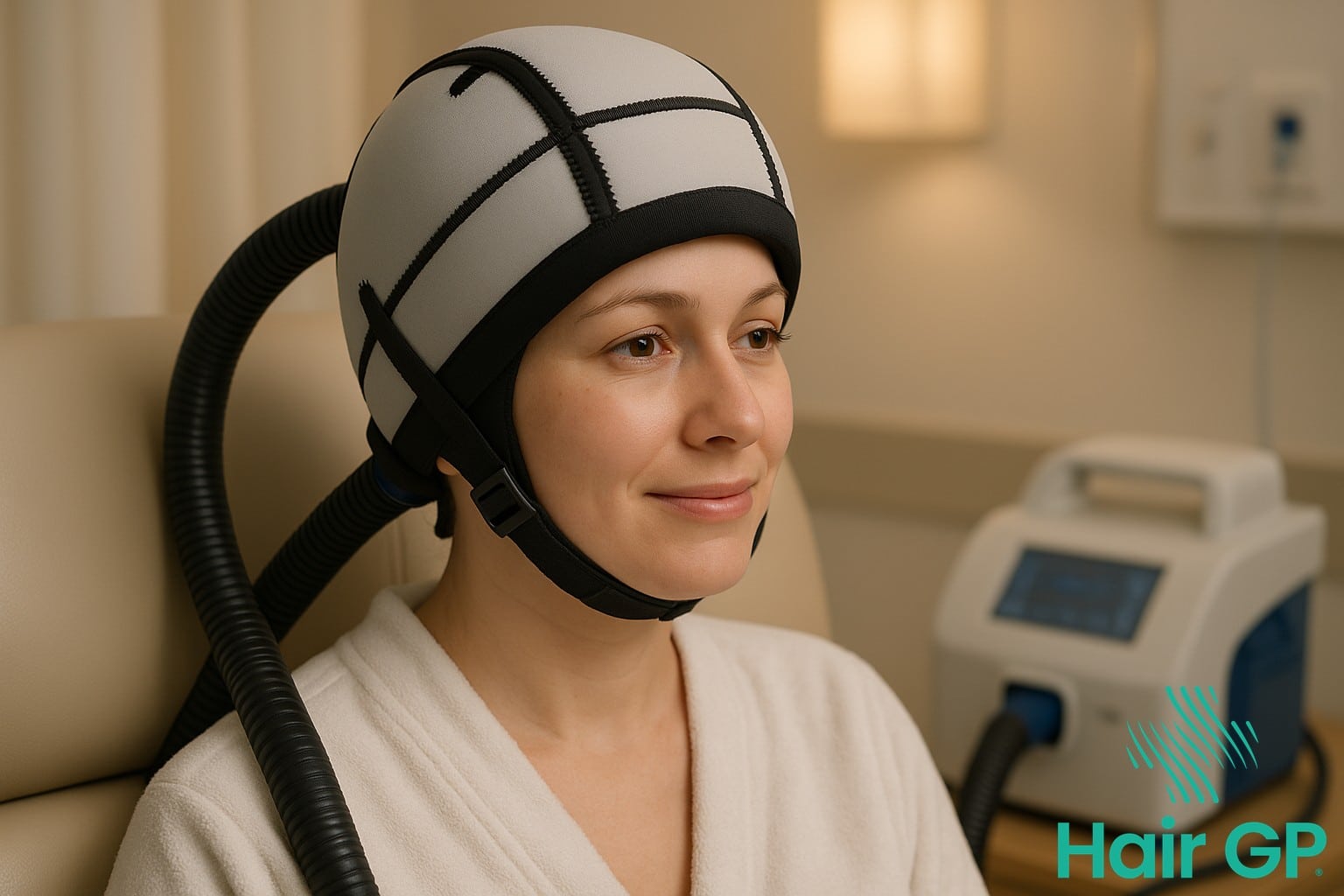
Cryotherapy for Specific Hair Conditions
Cryotherapy has emerged as a therapeutic option for various hair and scalp conditions, particularly those resistant to conventional treatments. The application of controlled cold temperatures can modify immune responses and stimulate follicular regeneration in conditions like alopecia areata and chronic hair loss disorders.
Alopecia Areata Treatment
Superficial cryotherapy using liquid nitrogen has shown promising results in treating alopecia areata, especially recalcitrant alopecia areata cases that have failed to respond to standard therapies[8]. The treatment protocol typically involves brief applications of liquid nitrogen spray or cotton-tipped applicators directly to affected patches for 10-15 seconds per session. Treatment frequency varies from weekly to fortnightly applications, depending on patient tolerance and response. Clinical studies have reported response rates ranging from 60-80% in localised alopecia areata patches, with initial regrowth often visible within 4-6 weeks. The mechanism appears to involve localised immunomodulation and increased blood flow to dormant follicles. Patients with recalcitrant alopecia often benefit from combination protocols incorporating cryotherapy alongside topical immunotherapy. The treatment is particularly effective for small to medium-sized patches, though outcomes vary significantly in extensive hair thinning or totalis presentations.
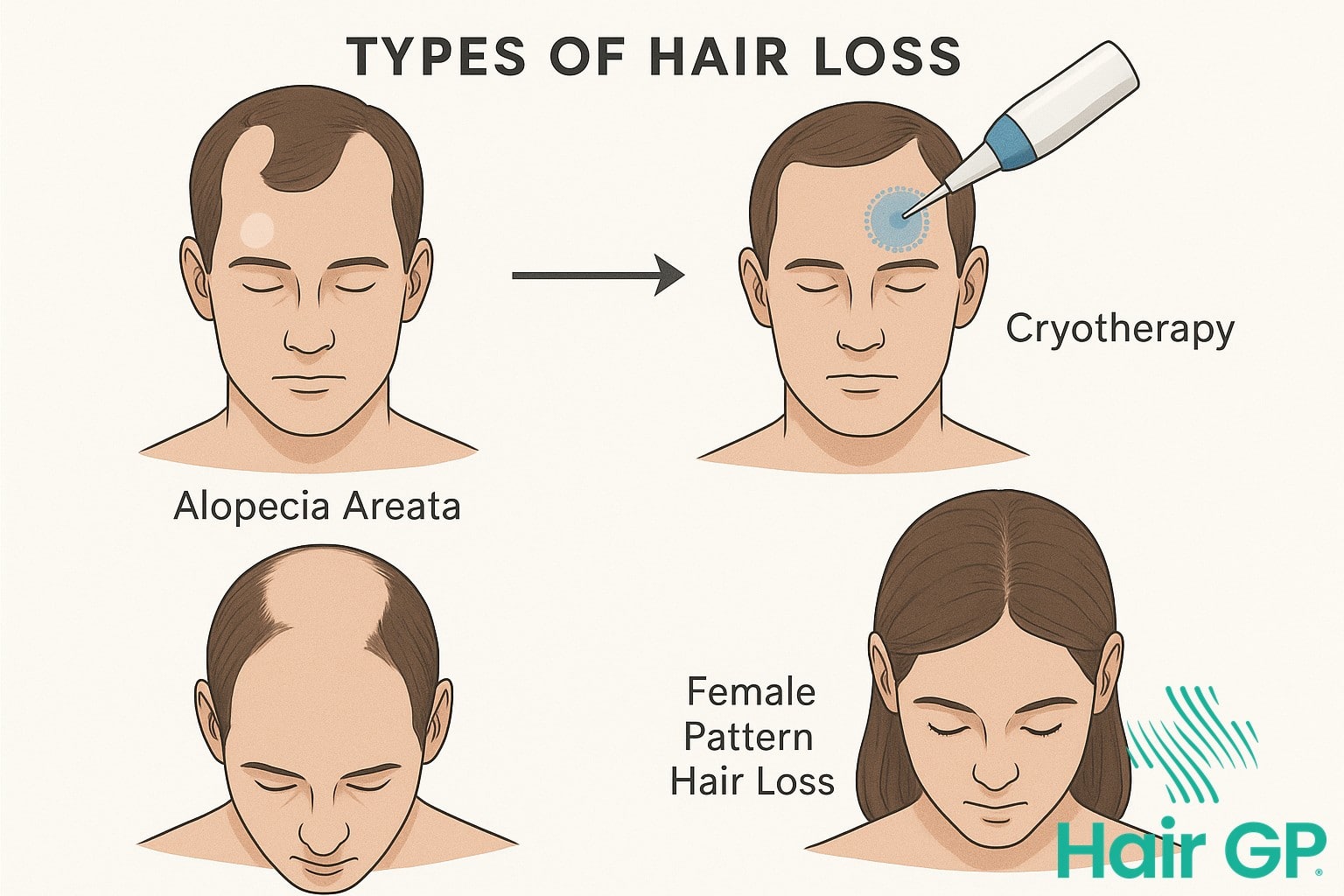
Incorporating Cryotherapy into Your Hair Care Routine
Incorporating cryotherapy into your hair care routine requires understanding both professional and at-home options. Whether choosing clinical treatments or simple cold therapy methods, integration should complement your existing hair care regimen whilst prioritising safety.
Professional vs Home Treatment
Professional cryotherapy offers controlled cold air exposure with precise temperatures, though costs range from £50-150 per session. Home alternatives using ice packs provide accessibility but less consistent results. Effectiveness varies significantly, with clinical treatments delivering targeted scalp cooling whilst DIY methods offer basic benefits at minimal expense.
Safety Considerations
Safety remains paramount when incorporating cryotherapy into hair care. Limit cold exposure to 10-15 minutes to avoid frostbite[1]. Never apply ice directly to scalp; always use barriers like towels. Contraindications include Raynaud’s disease, cold urticaria, and open wounds[2]. Consult healthcare providers before beginning any cryotherapy regimen, particularly with pre-existing conditions.
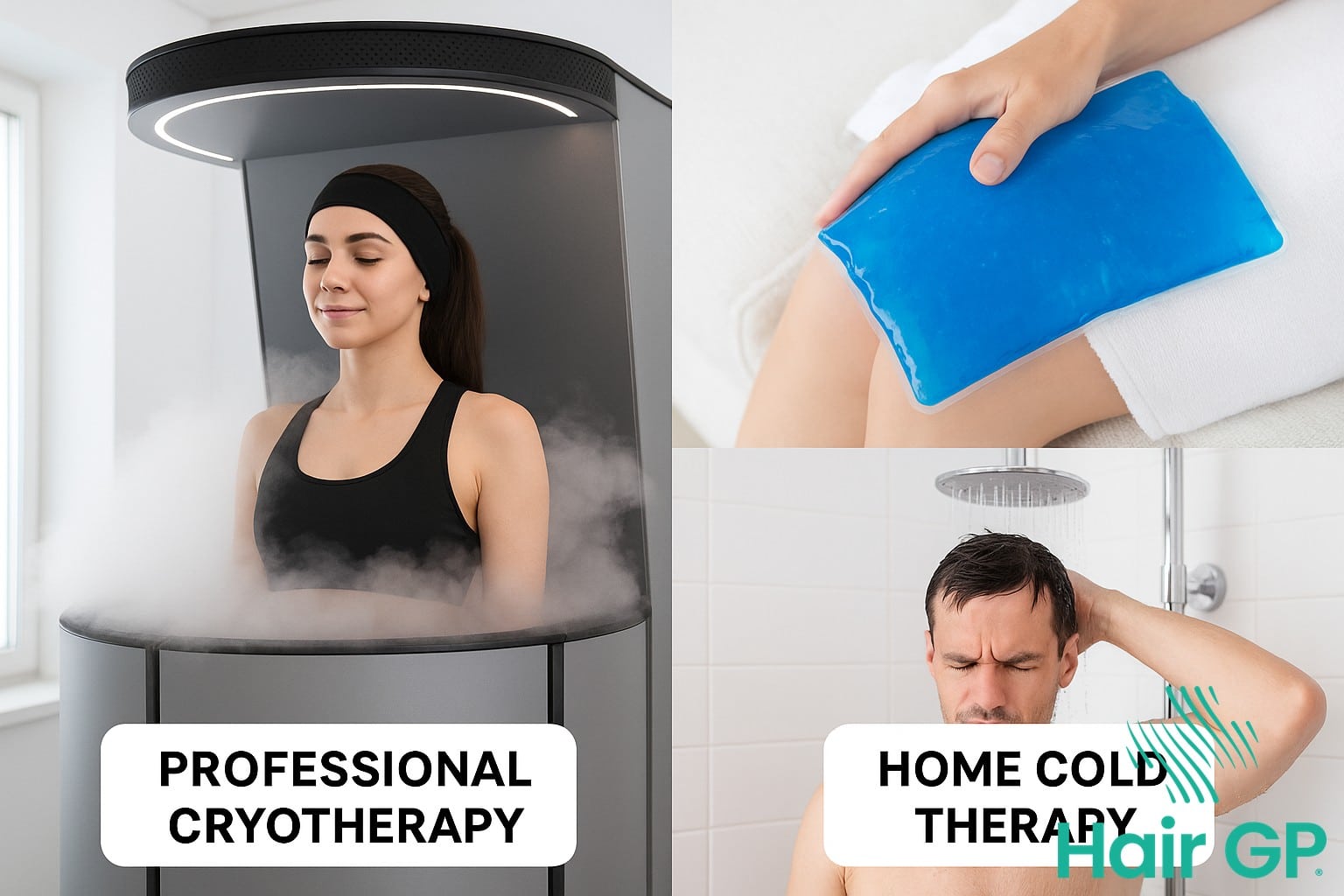
Conclusion
Cryotherapy for hair growth represents a promising frontier in addressing hair loss concerns, offering a natural, non-invasive approach to improving hair health. The evidence suggests that consistent cold exposure benefits multiple aspects of follicular function, from enhanced blood circulation to reduced inflammation and improved cellular regeneration. Whilst traditional hair care methods remain valuable, incorporating cold therapy into regular routines may provide additional support for those seeking to maintain or restore their hair’s vitality.
Success with cryotherapy requires proper technique and unwavering consistency. Whether through scalp cooling, cold showers, or professional treatments, the key lies in regular application whilst carefully monitoring individual responses. It’s essential to start gradually, allowing the body to adapt to cold exposure whilst avoiding extreme temperatures that could potentially damage sensitive follicular structures.
However, more comprehensive research is needed to fully understand the long-term effects of cryotherapy on different types of hair loss. Future studies should explore optimal treatment protocols, individual variations in response, and potential combinations with other therapies. Until then, those interested in cryotherapy for hair growth should approach it as a complementary treatment, ideally under professional guidance, whilst maintaining realistic expectations about results and timelines.
Frequently Asked Questions
For optimal results, whole body cryotherapy sessions are typically recommended 2-3 times per week for 4-6 weeks initially, then maintained with weekly sessions. Scalp-specific treatments may vary based on the condition being treated.
When performed correctly, cryotherapy is safe for hair and scalp. However, excessive cold exposure or improper technique can cause frostbite or tissue damage. Always follow professional guidelines and start with shorter exposure times.
Results vary by individual and condition. Some people notice improved scalp health within 2-3 weeks, while visible hair growth improvements typically take 2-3 months of consistent treatment.
Cryotherapy shows promise for various types of hair loss, particularly inflammatory conditions like alopecia areata. However, effectiveness varies for genetic pattern baldness and other causes. Consult a healthcare provider for personalized advice.
Yes, home methods like cold showers, ice pack applications, and cold water rinses can provide some benefits. However, professional cryotherapy typically delivers more controlled and intense cold exposure for potentially better results.
References
- Bouzigon R, Grappe F, Ravier G, Dugue B. Whole- and partial-body cryostimulation/cryotherapy: Current technologies and practical applications. J Therm Biol. 2016. PMID: 27712663
- Lombardi G, Ziemann E, Banfi G. Whole-Body Cryotherapy in Athletes: From Therapy to Stimulation. An Updated Review of the Literature. Front Physiol. 2017. PMID: 28512432
- Algafly AA, George KP. The effect of cryotherapy on nerve conduction velocity, pain threshold and pain tolerance. Br J Sports Med. 2007. PMID: 17224445
- Pournot H, Bieuzen F, Louis J, Mounier R, Fillard JR, Barbiche E et al.. Time-course of changes in inflammatory response after whole-body cryotherapy multi exposures following severe exercise. PLoS One. 2011. PMID: 21829501
- Dulak J, Józkowicz A. Regulation of vascular endothelial growth factor synthesis by nitric oxide: facts and controversies. Antioxid Redox Signal. 2003. PMID: 12626124
- Rugo HS, Klein P, Melin SA, Hurvitz SA, Melisko ME, Moore A et al.. Association Between Use of a Scalp Cooling Device and Alopecia After Chemotherapy for Breast Cancer. JAMA. 2017. PMID: 28196257
- Nangia J, Wang T, Osborne C, Niravath P, Otte K, Papish S et al.. Effect of a Scalp Cooling Device on Alopecia in Women Undergoing Chemotherapy for Breast Cancer: The SCALP Randomized Clinical Trial. JAMA. 2017. PMID: 28196254
- Lei Y, Nie Y, Zhang JM, Liao DY, Li HY, Man MQ. Effect of superficial hypothermic cryotherapy with liquid nitrogen on alopecia areata. Arch Dermatol. 1991. PMID: 1845292

